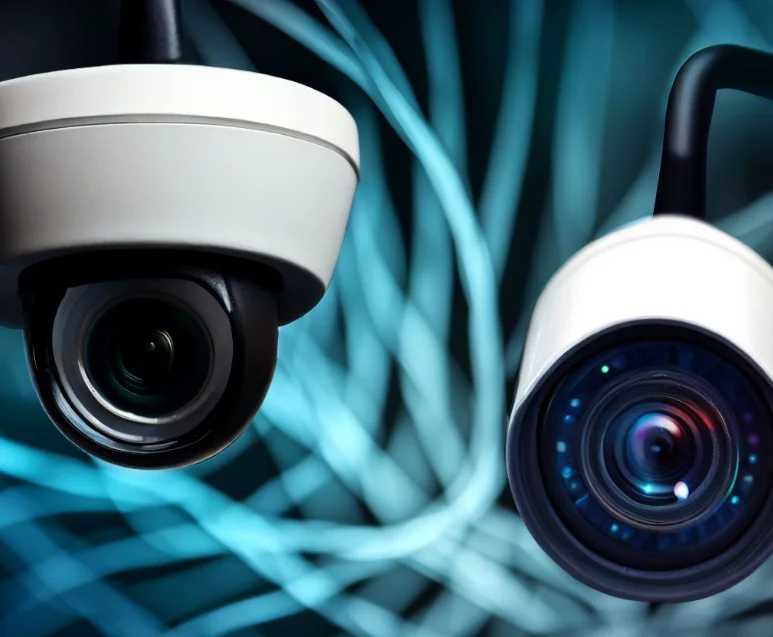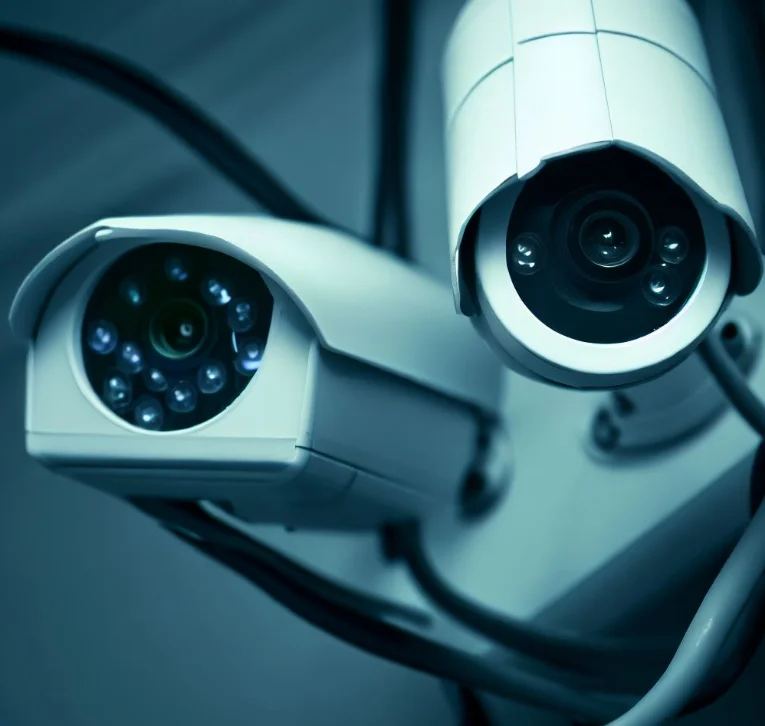When we talk about protecting your home and family, installing a high-quality security camera system is a wise choice. But which type of system should you go with – wired or wireless? Both options have advantages and disadvantages to consider. In this article, we will explore the key differences between wired and wireless security cameras so you can determine which would be the best fit based on your unique situation and priorities.
Wired Security Camera Systems
A wired security camera system utilizes physical cabling to transmit video feeds from cameras to a central recording device. The most common types of wired systems are those that use coaxial or ethernet cabling. Coaxial systems utilize coaxial cables to transmit both power and video signals from cameras to a Digital Video Recorder (DVR). Ethernet systems employ Power over Ethernet (PoE) to deliver power to cameras via ethernet cabling while also transmitting video footage.

A key advantage of wired security cameras is their reliability. As long as the cabling remains intact, the cameras will continue recording and transmitting feeds without interruption. This makes wired systems highly dependable for consistent surveillance. Video quality is also typically better than wireless alternatives since transmission is not subject to Wi-Fi limitations. Wired systems are also less vulnerable to hacking attempts since footage never travels over the internet.
However, wired systems do require professional installation which can be an expensive upfront cost, sometimes exceeding $2,000 even for a basic 4-camera setup. Extensive wiring work is involved in running cables to all camera locations. Wired cameras are also stationary once installed, making repositioning difficult without additional cabling changes. The fixed nature also means these systems stay with the property rather than the homeowner if they move.
Wireless Security Camera Systems
Wireless security camera systems utilize Wi-Fi or cellular networks to transmit live video feeds and recordings to recording devices or cloud-based servers. Wireless cameras connect to a home’s wireless internet router for access. Some wireless cameras can be wired for constant power via standard electrical outlets, while others run solely on rechargeable battery power for true wireless, untethered use.
The biggest advantage of wireless security cameras is their easy, do-it-yourself installation. No wiring work is required to connect cameras to a central location. As long they are within range of the wireless network, wireless cameras can simply be mounted and configured through a mobile app. This flexibility allows for swift, low-cost setup compared to wired systems. Wireless cameras are also highly mobile – owners can rearrange camera placements as desired without hassle.
While offering more setup convenience, wireless security cameras do have some notable downsides. Footage quality may be lower than wired options since transmission relies on Wi-Fi bandwidth limitations. Connectivity can also be disrupted by wireless interference or network outages. Battery-powered wireless cameras require regularly changed batteries as well. Privacy and security are bigger concerns too, as all footage travels over the home network and is potentially accessible via the internet.
Overall, whichever type of security camera system – wired or wireless – is most suitable depends on individual needs and priorities. Let’s explore some specific scenarios:
- Homeowners invested in a property long-term may prefer the reliability of a wired system, even if installation is more extensive upfront. Renters likely want an easy, removable wireless option.
- Larger homes with distant camera placements are better suited to wired options that don’t lose connectivity over long distances. Wireless works well for compact layouts.
- Users prioritizing video quality may choose wired cameras not constrained by Wi-Fi bandwidth limits. Wireless satisfies budget or simple surveillance needs.
- Privacy-focused individuals install wired systems keeping footage off the internet. Wireless users takes steps like enabling encryption to safeguard transmissions.
- DIY-inclined buyers can self-install affordable wireless options. Professionals are best for complex wired installations.
For many homeowners, combining wired and wireless cameras capitalizes on the advantages of each while offsetting some limitations. Outdoor cameras covering long ranges or stationary points of view are good candidates for wiring. Meanwhile, moveable indoor cameras suited to wireless operation. Overall system compatibility is important too when selecting equipment from the same manufacturer.
Conclusion
In conclusion, both wired and wireless security camera systems effectively serve home monitoring needs. Choosing between the two involves weighing factors like installation complexity, mobility needs, video quality priorities, and infrastructure capabilities. With so many excellent options available today from top brands at various price points, either system type can deliver outstanding protection for your property when configured to suit your situation.

